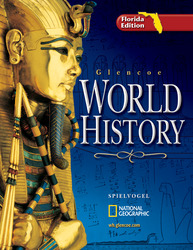1 A) The use of forced labor B) High taxes C) Military failures D) all of the above 2 A) the restoration of the civil service examination. B) the building of the Grand Canal. C) the reunification of China. D) the invention of steel. 3 A) making steel by mixing cast iron and wrought iron. B) the introduction of cotton. C) the completion of the Grand Canal. D) the invention of gunpowder. 4 A) Persia. B) the Abbasids. C) western Europe. D) the Song dynasty in China. 5 A) the world is an illusion. B) the goal of humans is to embrace the material world. C) individuals must examine the moral principles that rule the universe. D) the material and spiritual world are united. 6 A) Li Bo B) Duo Fu C) Kublai Khan D) Sui Yangdi 7 A) led to a belief in a destiny separate from that of the peoples on the continent. B) helped protect Japan from invasion. C) caused the Japanese to develop a number of unique qualities. D) all of the above 8 A) the samurai, who were loyal to their lords B) the influence of the Yamatos C) the growing power of daimyos D) aristocratic control of tax-exempt farmland 9 A) member of the Koryo dynasty. B) Samurai warrior. C) female novelist. D) Yamato prince. 10 A) was considered a way of life rather than a religion. B) was eventually absorbed by Hinduism. C) upholds the Buddha as a divine figure. D) remained influential in India even after the arrival of Islam. 11 A) rivalry. B) friendship and understanding. C) conqueror and conquered. D) tolerance. 12 A) When internal trade was interrupted, foreign trade also suffered. B) Foreign trade remained high even when Indian states were at war. C) Foreign trade was dominated by Muslim merchants, who had ties to other Muslim states. D) India had long been a center for trade between Asia and Europe. 13 A) prevent the region from being invaded. B) keep the region from being unified under a single government. C) encourage the development of separate, distinctive cultures. D) cut off people living in river valleys from one another. 14 A) Vietnam B) The Sultanate of Melaka C) Pagan D) Angkor 15 A) merchants B) hereditary aristocrats C) scholar-gentry D) artisans







